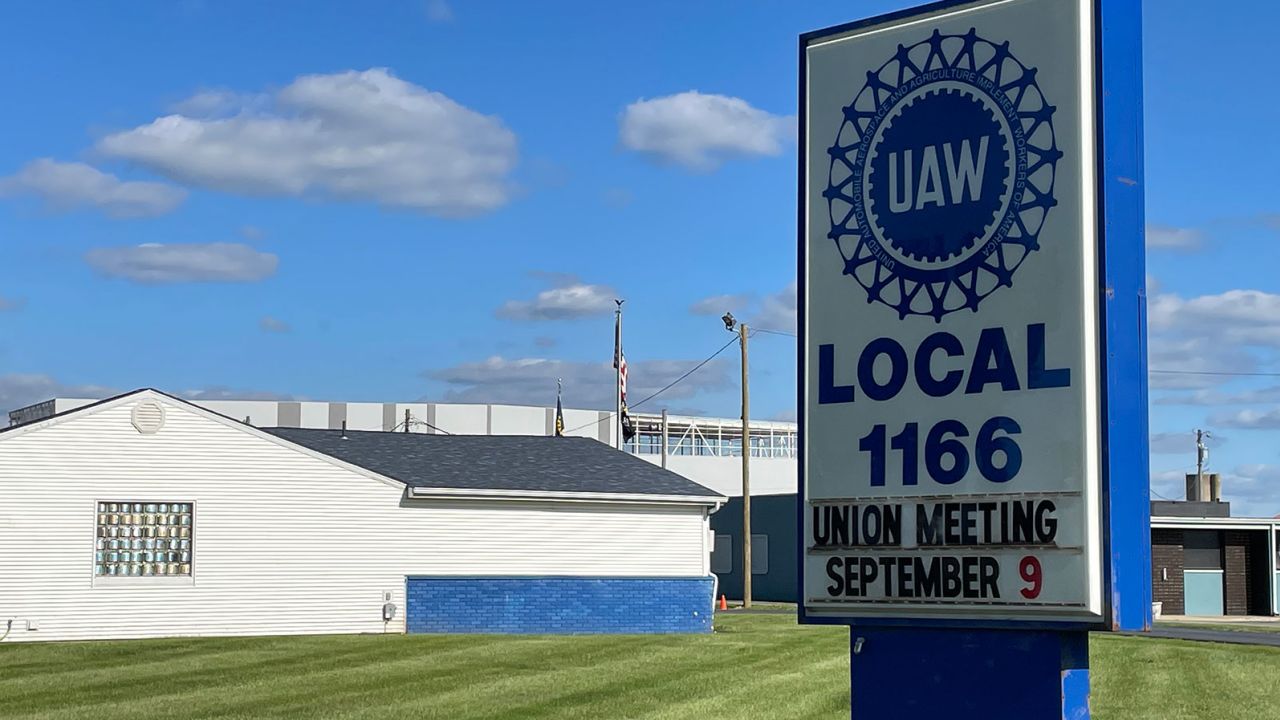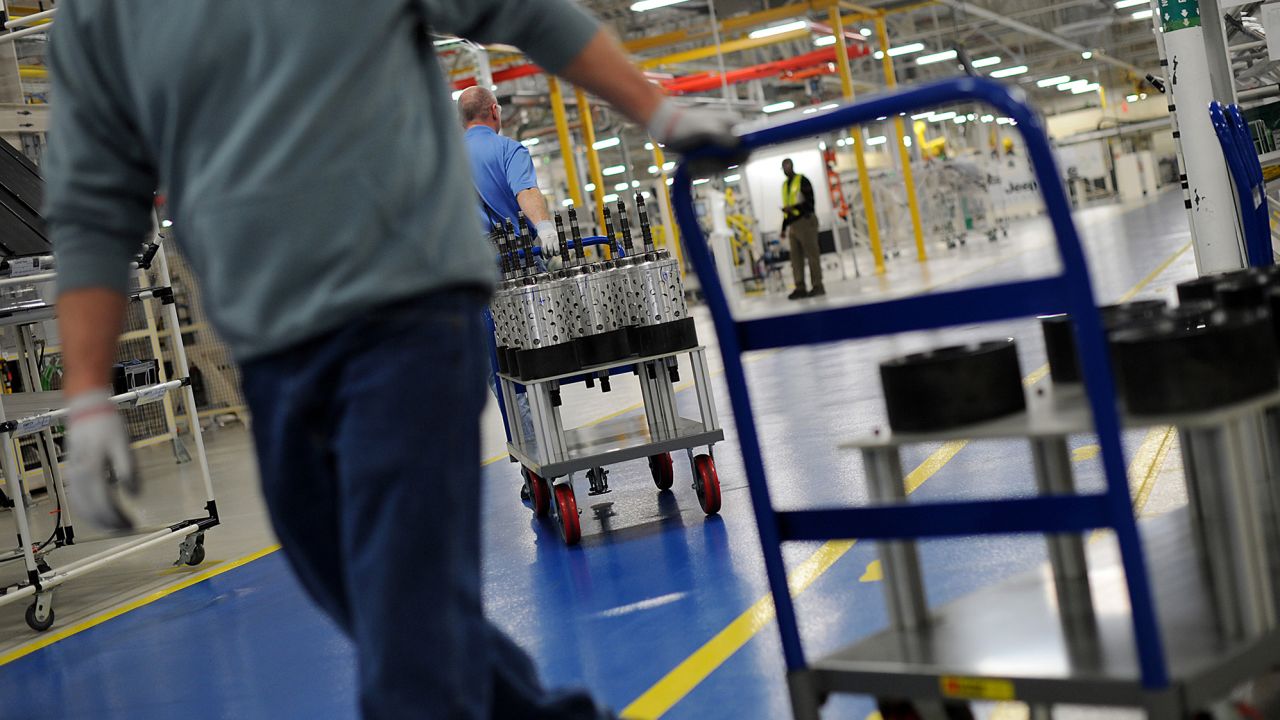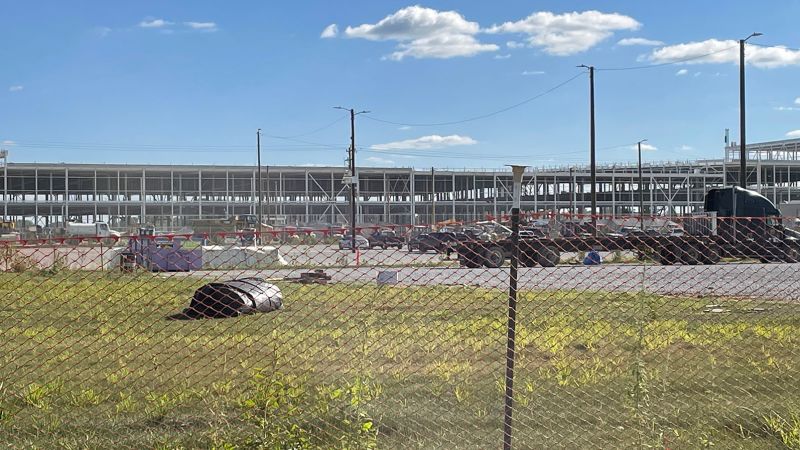Kokomo, Indiana
CNN
—
Normally a new, $2.5 billion factory, complete with 1,400 expected jobs, would be considered a good thing for a local economy.
But not the battery plant in Kokomo, Indiana.
“It’s a spit in the face,” said Gary Quirk, president of United Auto Workers Local 685.
That’s because the plant will make large batteries for electric vehicles. The plant is being built by a joint venture of Stellantis, the automaker which makes vehicles under the Jeep, Ram, Dodge and Chrysler brands, and Samsung. UAW Local 685 represents four factories that Stellantis already operates in the town: three that make transmissions, one that makes engines.
The concerns of Quirk and his fellow union members epitomize a larger struggle in the US auto industry: Electric vehicles simply need less work to make. As automakers move to electric lineups, then, many of the well-paying union jobs making engines and other parts could disappear.
That struggle is on display in the Midwest now, as the current UAW contract with the Big Three unionized automakers — General Motors, Ford and Stellantis — runs out at 11:59 pm on Thursday.
The union is demanding job protections among its ambitious slate of bargaining goals. It says it is ready to have its 145,000 members at the three companies go on strike as early as Friday if it can’t reach a deal with the companies.
Another UAW local hall in town, one that represents workers at a Stellantis casting plant also in Kokomo, sits directly across the street from the new battery plant. That local was once the home of Shawn Fain, now the president of the UAW and the one leading negotiations with automakers that could lead to a strike later this week.
“It’s our backyard,” said Denny Butler, vice president of Local 685. “It’s ironic.”
The planned conversion to EVs will mean upheaval and job losses for some employees who have been working in auto plants, often for generations. EVs need neither gasoline engines nor transmissions.
The jobs in Kokomo are among those most at risk.

Kokomo is an industrial island in a seat of green farm fields in north central Indiana, between Indianapolis and South Bend. Those four Stellantis plants there employ 4,500 hourly workers and another 600 salaried staff, or better than one out of every seven non-farm jobs in the city and the surrounding area.
But now Stellantis, Ford and GM are planning all-electric futures, futures that will likely need fewer workers to build the same number of vehicles.
“We know we’re on borrowed time,” said Todd Dunsmore, who has worked at Stellantis for seven years. How does he feel about the EV transition? “I know it’ll hurt Kokomo.”
But some other members of Dunsmore’s local UAW are not as convinced that EVs are an existential threat to gas powered vehicles and their jobs. Many believe the company will decide to have other work done at the Kokomo plants, even if it no longer needs transmissions or engines. And many at the union’s Kokomo offices just doubt EVs will amount to most, let alone all, of the market.
Philip Kline has worked at one of the transmission plants in town for 27 years. His dad worked there for 30 years. He doesn’t believe that there is real demand out in the public for EVs.

“The thing that worries me is that (President Joe) Biden is rushing this,” he said.
That’s a common fear, even among those who don’t believe in EVs — that the auto industry will be forced to shift to EVs whether or not there is demand for them by car buyers.
“I don’t believe that people are ready for EVs, to be honest with you,” said Quirk. “The politicians might be ready, but I don’t believe the people are.”
“It sounds pretty good on paper. But the infrastructure isn’t set up to handle it,” said Butler. “You can spend more time charging the car, or trying to find a charger, than you do on the road.”
While EV sales are still only a fraction of vehicle sales, the automakers see growing public demand for EVs — and the need to comply with increasingly tougher environmental regulations around the world.
Even with their doubts, Kline, Quirk and Butler are nervous.
“If push comes to shove, if there are layoffs because of the EVs, the bottom line is we have no place to go,” Quirk said.
The Kokomo battery plant is still more than a year away from starting production. While it’s begun to hire some employees, it doesn’t yet have the workers who will be on the floor building the batteries.
The workers will not be Stellantis employee but employees of a separate company, the union says. Senior UAW members at Stellantis, General Motors and Ford get $32.32 an hour. The battery plant workers are likely to start at half that, Quirk said.
“It’s a fraction of what we make. Let’s face it, it’s not a livable wage,” he said.
The three unionized US automakers are all building EV battery plants. There is one plant open, an Ohio joint venture plant between GM and LG, and nine more plants planned or under construction.
In all cases the plants are joint venture with foreign battery makers. That means those workers won’t be employed by the automakers themselves — and thus, they will not be union, unless they organize.
The UAW said it doesn’t oppose plans to shift to EVs, even though by some estimates that could mean a 30% drop in jobs because EVs have fewer moving parts and need less labor to make.
But the union says it must be a “just transition” to EVs with good paying, unionized jobs for those who lose their positions due to the conversion. It says the EV plans make these talks “our generation’s defining moment.”
It will be difficult for the union to win UAW-level wages at the battery plants. Workers at the first plant to open in Ohio did vote to join the UAW in December, and the union just won more than a 20% wage increase there. Even with the pay rise, that’s still a fraction of what workers get at union plants. The workers in Ohio will now get a starting wage of $20.50 an hour, up from the previous starting wage of $16.50 an hour. Even the top wage will be nearly 30% below top wage at a UAW plant today, let alone what it could be in the upcoming contract.
Still, winning significantly higher wages for battery plant workers at the Big Three might not be enough: The three unionized US automakers aren’t the only ones rushing to build battery plants. Another dozen are planned or under construction to serve the nonunion foreign automakers that now make most cars and trucks built in North America. Many are in the lower wage, primarily nonunion Southern states.
In Kokomo, the UAW members are bracing for a strike many are sure will start this week. Dunsmore was at the union hall on a recent Wednesday afternoon to sign up for picket line duty at one of the plants in town.
“I’ve been planning on this for a year,” he said.
Sumber: www.cnn.com






